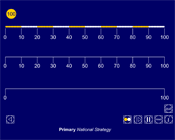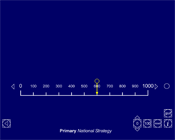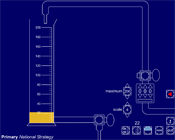Consolidation and practice
These resources are to support children in guided or independent work. Roll over the highlighted resources for a description.
Ordering numbers

This interactive teaching program (ITP) is an ICT-based tool that contains an animation to support the teaching of ordering numbers. Ordering numbers ITP can also be used to help children develop estimation skills and strategies for checking calculations.
Decimal number line

This interactive teaching program (ITP) is an ICT-based tool to support the exploration of place value within whole and decimal numbers. Decimal number line ITP allows the child or teacher to select an interval from a given number line and show that interval divided into ten equal parts but on a bigger scale, which can then be repeated.
Measuring cylinder

This interactive teaching program (ITP) is an ICT-based tool to support the exploration of number, measures and problem solving. Measuring cylinder ITP allows the child or teacher to simulate varying intervals on a scale, pouring liquid into the cylinder and interpreting the scale. The ITP can be used to explore and consolidate the interpretation and reading of scales, mental calculation strategies and methods of recording.
Confirming learning
Ask probing questions such as:
- When ordering a set of numbers, what do you look at first?
- Which of these numbers would be placed between the two arrows? 330, 382, 403, 322, 345, 358

- What number lies halfway along this line? How do you know?

- Write down five numbers that lie between 750 and 850. Which of your numbers is closest to 750? 800? 850?



 Counting and understanding number
Counting and understanding number







